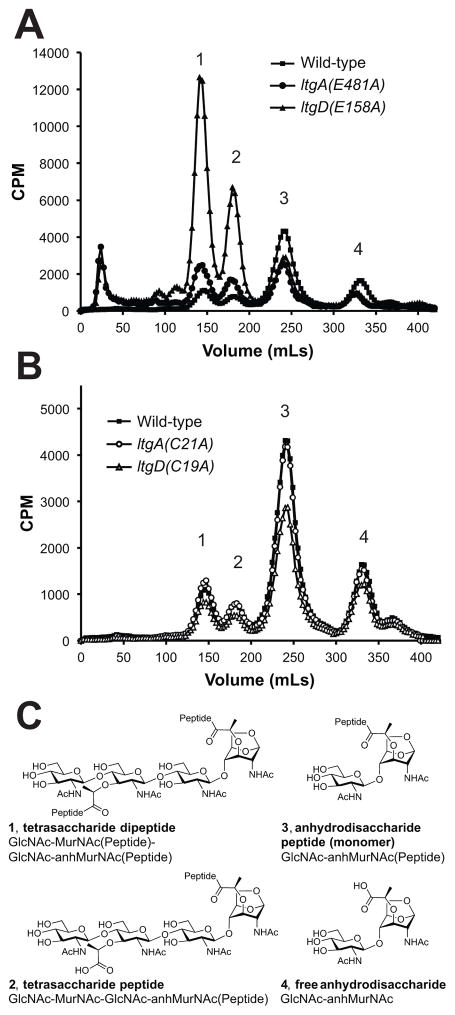Figure 5.
PG fragments released from growing ltgA and ltgD mutants. Cultures of gonococci were pulsed with [3H]-glucosamine to label PG, and released fragments were collected during a chase period. Radiolabeled fragments were separated by size-exclusion chromatography and measured by liquid scintillation counting. (A) Active site point mutants release PG fragments nearly identical to gene deletions with increased (1) tetrasaccharide dipeptide and (2) tetrasaccharide peptide, and decreased (3) anhydrodisaccharide peptide monomers and (4) free anhydrodisaccharide. (B) Disrupting the lipidation of LtgA had no effect on the amount of peptidoglycan fragments released, but disrupting lipidation of LtgD decreased the amount of released PG monomers. (C) Chemical structure of detected PG fragments released by N. gonorrhoeae. 1, tetrasaccharide dipeptide; 2, tetrasaccharide peptide; 3, anhydrodisaccharide peptide monomer; 4, free anhydrodisaccharide

